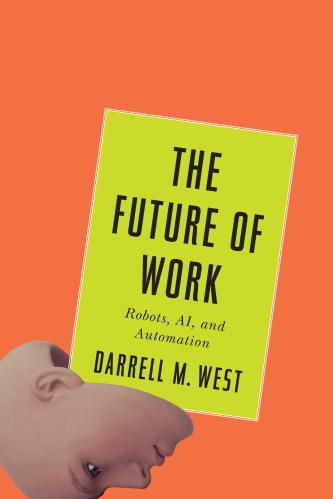Studies in this week’s Hutchins Roundup find that debt forgiveness policies mitigated some of the effects of the Great Recession, automation contributes to productivity less than it did in the past, and more.
Want to receive the Hutchins Roundup as an email? Sign up here to get it in your inbox every Thursday.
Debt forgiveness laws soothed consumer spending and employment in the Great Recession
High levels of household debt played an important role in the Great Recession, implying that debt forgiveness policies might have been beneficial. Adrien Auclert of Stanford University, Paul Goldsmith-Pinkham of Yale University, and Will S. Dobbie of Princeton University use the large variation in state bankruptcy laws to study this. While some states allow those filing for bankruptcy to keep larger portions of their wealth—for example, seven states allow filers to keep all their home equity—others have lower exemption amounts or none at all. They find that states with more generous bankruptcy laws had significantly smaller employment declines than those with more stringent laws. The authors estimate that overall employment in the United States would have been almost 2 percent lower in the second half of 2009 had bankruptcy exemptions not relieved the strains on consumer spending after 2007.
Automation creates fewer jobs now than it did in the past
Some attribute the slowdown in wage growth in the United States to technologies that displace workers and reduce labor demand. But automation can also raise wages by increasing worker productivity or creating new tasks. Daron Acemoglu of MIT and Pascual Restrepo of Boston University show that in the four decades after World War II, automation created and destroyed jobs at about the same rate and that productivity growth was strong, implying that overall the effects of technology on labor demand were positive. In the last 30 years, however, automation replaced workers faster than it created new jobs, and productivity growth was low. In manufacturing, for example, increased automation reduced demand for labor by 20 percent between 1987 and 2017. The results indicate that wage stagnation can be explained by both the overall rise in automating tasks and a deterioration in the quality of new automation. The authors suggest that tax policies may over-incentivize the use of equipment (for example, via expensing) and over-tax labor (for example, via payroll taxes), pushing companies to substitute machines for labor even when that doesn’t boost productivity.
Market concentration hasn’t risen in the euro area
Many researchers have documented that market concentration and firm market power in the United States have increased significantly over the last three decades. Maria Chiara Cavalleri and coauthors from the European Central Bank find, however, that market concentration has remained relatively flat in the euro area and even declined in some euro area countries over the last 10 years. Firms’ abilities to raise prices have declined slightly in the last decade, too, as trade within the currency union has increased. The authors show that the turnover rate of firms—an indicator of market competition—is generally lower in the euro area than in the U.S., but has remained relatively constant in the euro area while it has fallen dramatically in the U.S. The findings indicate that stories of declining competition and rising market power don’t apply to the euro area.
Chart of the week: Global bond yields have fallen as the outlook has dimmed

Quote of the week:
“Whether we are talking about a garden variety recession or a worst-case scenario, we should anticipate that a downturn awaits us somewhere over the horizon. … The bottom line is this: The tools used to confront the Global Financial Crisis may not be available or may not be as potent next time. The space for additional monetary policy accommodation will surely be more constrained; fiscal resources may not be as available in many countries; and political resistance to bailouts may be greater because many people feel that those who brought about the last crisis did not shoulder their share of the burden,” says David Lipton, first deputy managing director of the International Monetary Fund.
“Obviously, this is not a matter for Europe alone. The U.S. needs to get its fiscal house in order as well. U.S.-China trade tensions pose the largest risk to global stability. Beijing needs to continue its shift toward high-quality growth and should support a sustainable globalization. All emerging markets should face up to external shocks and volatile capital flows.”










Commentary
Hutchins Roundup: Debt forgiveness, automated tasks, and more
March 28, 2019